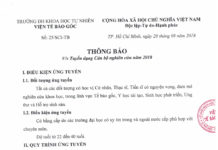Stem Cells and Cancer Stem Cells, Volume 4
Volume 4 of the series Stem Cells and Cancer Stem Cells pp 113-124
Improving the Efficacy of Diabetes Mellitus Treatment by Combining Cell Replacement Therapy with Immune Correction
Abstract
Type 1 diabetes mellitus is an autoimmune disease in which the islet β-cells are damaged and unable to produce insulin. Both insulin injection and pancreas/islet grafts offer highly efficient treatments, but they also have many limitations. Stem cell therapy has the potential to overcome these limitations and may offer the best outcomes for treating diabetes mellitus. Based on the pathophysiology of diabetes mellitus, stem cell therapy targets two mechanisms, namely cell replacement and immune correction. The aim of this series of studies was to evaluate the efficiency of diabetic treatment by combining cell replacement therapy with immune correction therapy. Mesenchymal stem cells (MSCs) and hematopoietic stem cells (HSCs) were derived from syngenic mouse bone marrow. Diabetic mice were created by injection of streptozotocin. Diabetic mice were transplanted with HSCs and insulin-producing cells (IPCs) via the tail vein after destroying the bone marrow. The results showed that transplantation of both IPCs and HSCs elicited greater improvements in body weight, blood glucose level and survival time than did transplantation of HSCs or IPCs alone. These findings provide hope for a new strategy that can improve the outcomes of stem cell-based therapy for diabetes in humans.
Keywords
Cell replacement therapy Diabetes mellitus Hematopoietic stem cells • Immune correction Mesenchymal stem cell Stem cell therapy
Link:
http://www.springer.com/biomed/cancer/book/978-94-007-2827-1
I. Molecular genetic.-1 Neural stem/progenitor cell proliferation and differentiation: role of sonic hedgehog and wingless/int-1 proteins.-2 Sensitivity of hematopoietic and leukemic stem cells to hoxa gene levels.-3. Maintenance of neural stem cells in the brain: role of notch signaling.-4 Maintenance of hematopoiesis: role of early b cell factor 2 matthias kieslinger.-5 Differentiation of periodontal stem/progenitor cells: roles of tgf-β1.-6 Induced pluripotent stem cells from human extra-embryonic amnion cells: role of dna methylation in mainting stemness.-7 Smooth muscle cell differentiation from embryonic stem cells: role of hdac7 and pdgf-bb.-8 Adult neural stem cells; identity and regulation. II. Regenerative Medicine.-9 Tendon injury: role of differentiation of aduilt and embryonic derived stem cells.-10 The potential of stem cells and tissue engineered scaffolds for repair of the central nervous system.-11 Improving the efficacy of diabetes mellitus treatment by combining cell replacement therapy with immune correction.-12 Induced pluripotent stem cell production and characterization: an overview of somatic cell reprogramming.-13 Proliferation of bone marrow-derived human mesenchymal stem cells: role of enamel matrix proteins.-14 Pluripotent cell-derived glial precursor cells for the delivery of therapeutic proteins to the central nervous system.-15 Cellularized scaffolds: new clothes for cardiac regenerative medicine.-16 Microencapsulation procedures for the immunoisolation of wharton’s jelly mesenchymal stem cells: a review. III Therapy.-17 Human hair follical stem cells: markers, selection and perspective clinic application.-18 Adipose-derived stem cells: therapy through paracrine actions.-19 Mesenchymal stem cell-natural killer cell interactions.-20 Malignant gliomas: treatment using genetically-modified neural stem cells.-21 The cancer stem cell hypothesis and its impact on the design of new cancer therapies.-22 Breast cancer stem cell: translating to the clinic.-23 Enhanced growth and metastasis of colon cancer: role of mesenchymal stem cells.-24 Proteomic characterization of mesenchymal stem cell-like populations derived from various tissue types. IV Transplantations.-25 Severe combined immunodefieciency patients: immune recovery after stem cell transplantation.-26 Transplanted mesenchymal stem cells aid the injured brain through trophic support mechanisms.Index.
Get it at:





